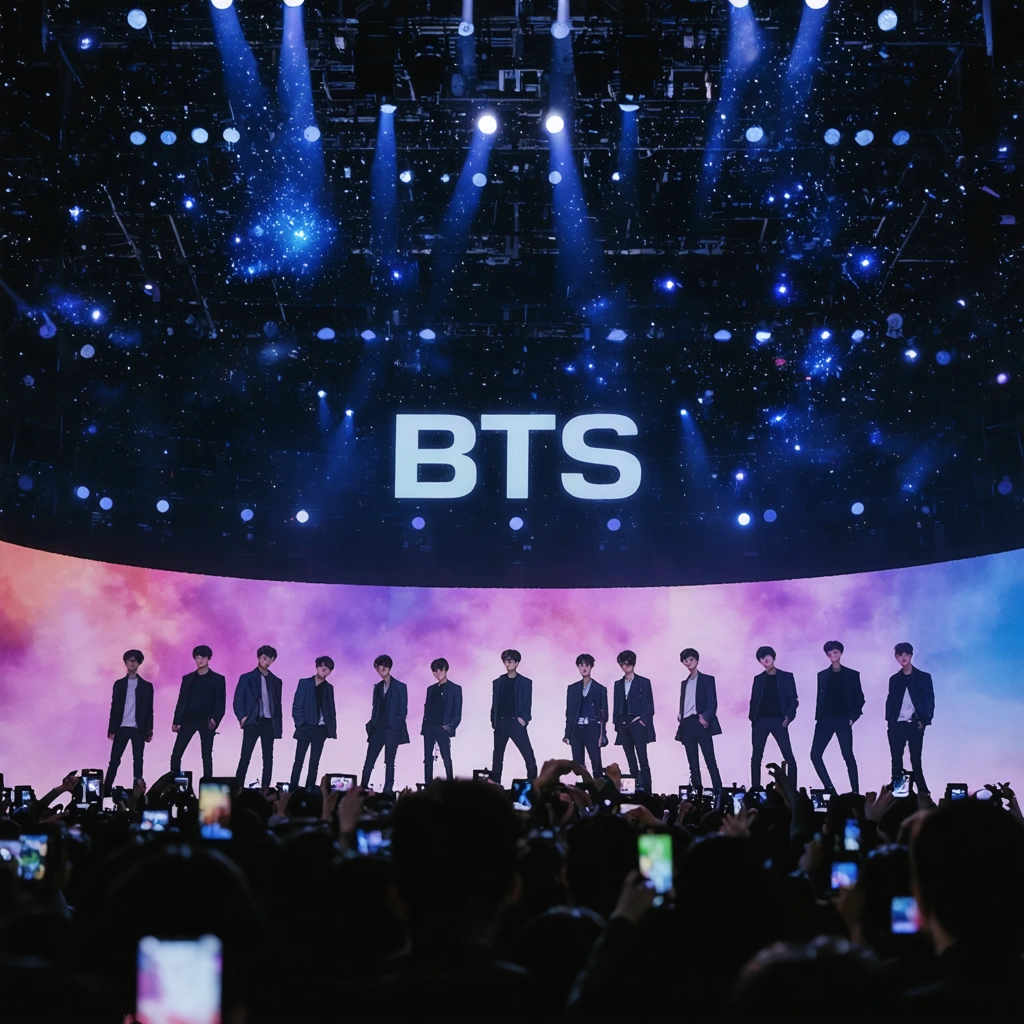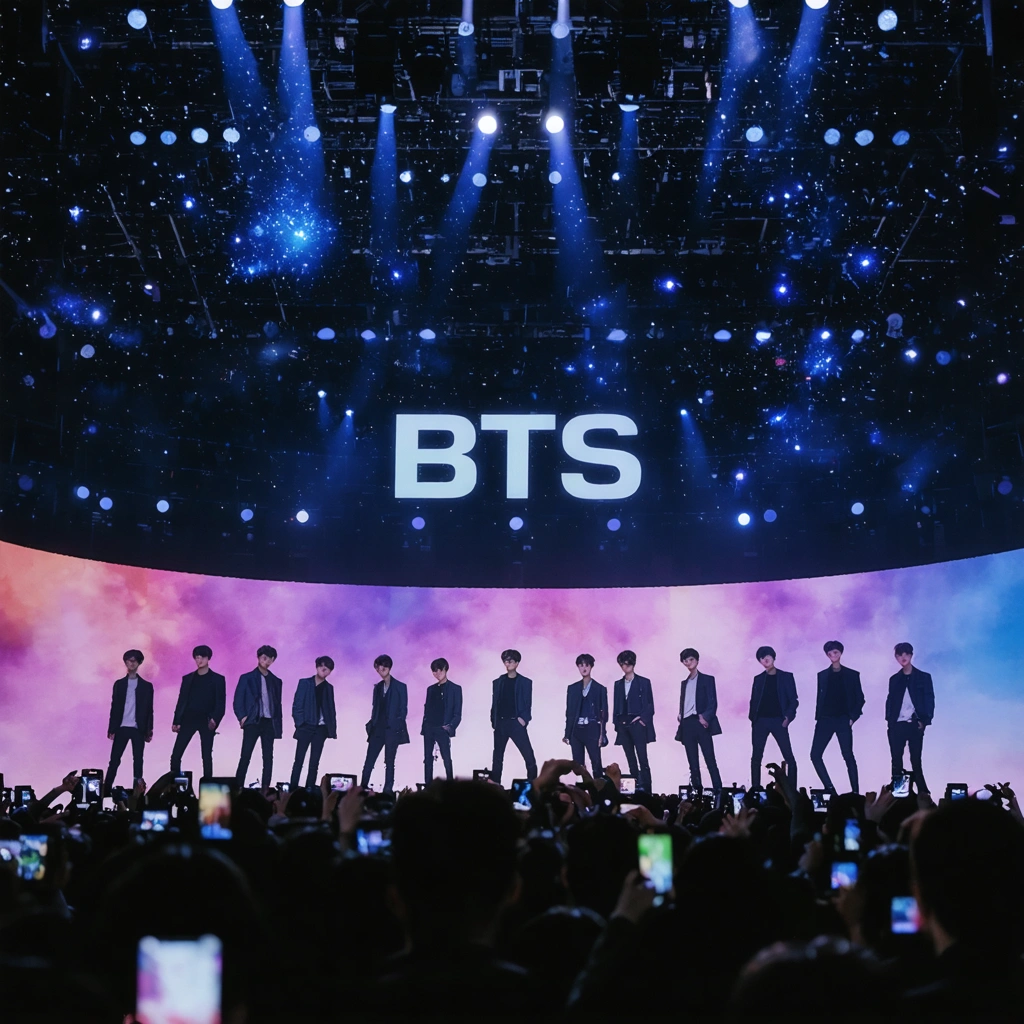The Marketing Power of BTS’ Global Influence: BTS’ massive fandom drives brand partnerships with unmatched marketing impact.

When a Fandom Becomes a Force to Reckon With
Imagine a music group so powerful that their mere logo sparks excitement across continents, and their every move—from releasing a new song to launching a pop-up store—creates a frenzy that brands can only dream of tapping into. That’s the reality with BTS, the South Korean boy band whose influence transcends music charts and spills into the realms of marketing and global commerce. Whether you’re a marketer, brand strategist, or simply curious about how pop culture shapes business today, understanding BTS’s exceptional marketing impact is indispensable.
Let’s start by considering something as simple as the BTS logo. It’s not just a symbol; it’s an emblem of a worldwide community. This logo adorns everything from apparel to digital campaigns, instantly recognizable and carrying the weight of millions of loyal fans. But what’s behind this unprecedented fan loyalty? The answer lies partly in the members themselves—their talents, personalities, and yes, their diverse BTS ages. From the youngest member, Jungkook, in his early twenties, to the eldest, Jin, in his late twenties, the BTS members’ age range plays a subtle yet crucial role in appealing to a broad demographic. This diversity fuels a fandom that’s vast in both size and age range, creating a ripple effect that brands eagerly ride.
Why Conventional Marketing Struggles to Match BTS’s Digital Dynamism
Brands have always sought to connect emotionally with their audience, but few have succeeded like BTS. The challenge many companies face is tapping into the digital heartbeat of today’s consumers—especially when those consumers are as passionate and digitally connected as BTS’s fans. The group’s mastery of BTS digital presence is staggering: from viral social media content to interactive fan experiences, they’ve built a digital ecosystem that brands find irresistible.
Consider the wildly successful collaboration around the BTS Meal launched by McDonald’s. This wasn’t just a typical fast-food promotion; it was a cultural event, igniting excitement worldwide and driving sales through the roof. The campaign's success wasn’t accidental—it was powered by BTS’s ability to mobilize millions of fans who didn’t just buy a meal; they participated in a shared experience. Traditional marketing campaigns often struggle to create this level of engagement and personal connection.
Moreover, the emergence of BTS pop up stores offers another fascinating dimension. These temporary retail spaces turn shopping into an event, offering exclusive merchandise and immersive brand experiences that fans eagerly anticipate. For marketers, these pop-up stores represent a new frontier—combining scarcity, exclusivity, and fandom into a potent sales driver. But the impact goes beyond immediate sales; it’s about building lasting brand affinity anchored in the passion of BTS’s global audience.
What Marketers Can Learn from BTS’s Global Phenomenon
So, what does all this mean for brands looking to harness the power of fandom-driven marketing? Here’s the crux: BTS’s influence teaches us that in today’s hyper-connected world, successful marketing is less about the product and more about the community. The BTS logo isn’t just an icon; it’s a gateway to a culture, a shared identity, and a powerful network of engaged consumers.
- Authenticity matters: Fans connect with BTS not just because of their music, but because of their genuine stories and personalities across a wide age spectrum.
- Digital presence is king: Leveraging platforms to create immersive, interactive experiences is key to sustaining engagement.
- Experiential marketing works: The success of BTS pop-up stores and the BTS Meal campaign show how creating memorable experiences can translate into tangible business results.
In the sections that follow, we’ll dive deeper into these facets of BTS’s marketing power, unpacking how their unique blend of global appeal, youthful energy, and digital savvy creates an unparalleled platform for brand partnerships. Whether you’re curious about the mechanics behind BTS’s age diversity, the strategic use of their digital presence, or the magic of their merchandising ventures, this article has you covered.
Ready to explore how BTS’s massive fandom is reshaping marketing as we know it? Let’s get started.

The Marketing Power of BTS’ Global Influence: How Their Massive Fandom Drives Brand Partnerships with Unmatched Impact
What makes BTS’ global influence so powerful in marketing?
BTS has grown beyond being just a K-pop group—they have become a global cultural phenomenon with a deeply loyal and engaged fanbase known as ARMY. This fandom’s size and dedication give BTS a unique marketing power, making them highly attractive to brands seeking authentic connections with consumers worldwide.
Their influence is amplified by several factors:
- Global reach: BTS members communicate in multiple languages, and their digital content reaches millions across continents.
- Multi-generational appeal: While BTS members’ ages range from their mid-20s to early 30s, their music and message resonate with diverse age groups, including teens and adults.
- Active digital presence: BTS digital platforms boast billions of views and interactions, making their online engagement a key marketing asset.
- Brand authenticity: BTS promotes meaningful messages around self-love, mental health, and social issues, which brands can align with to build trust.
How does the BTS logo and branding enhance their marketing collaborations?
The BTS logo symbolizes their identity as “Beyond The Scene,” representing youth and growth. This sleek and modern design is instantly recognizable, contributing to strong brand equity. The logo helps maintain consistent branding across collaborations, merchandise, and pop-up events, reinforcing consumer loyalty.
Brands partnering with BTS often incorporate the BTS logo into limited-edition products, making items more collectible and desirable. The logo’s global recognition boosts brand visibility and creates emotional connections between consumers and partnered products.
What role do BTS members’ ages and appeal play in their marketing effectiveness?
The BTS members’ ages, ranging approximately between 25 and 30 years old (with slight variations as they grow older), position them as relatable figures for both young adults and older fans. This age range allows them to connect authentically with a broad audience, including Gen Z and millennials, who are key consumer demographics for many brands.
Their maturity combined with youthful energy influences the types of partnerships they attract—luxury brands, tech companies, fashion labels, and food chains seek BTS for their ability to bridge cultural and generational divides effectively.
How has BTS’ digital presence revolutionized brand marketing strategies?
BTS digital content—including music videos, live streams, and social media posts—generates massive engagement. For example, their YouTube channel regularly hits hundreds of millions of views per video, and their Twitter and Instagram accounts have tens of millions of followers.
This digital dominance allows brands to leverage BTS’ content for viral marketing campaigns, ensuring immediate and widespread reach. For instance, BTS’ partnerships often include exclusive digital content, live events, and interactive campaigns that dramatically increase brand visibility and consumer interaction.
What are some successful examples of BTS brand partnerships?
BTS has collaborated with various global brands, generating impressive marketing outcomes:
- BTS Meal by McDonald’s: Launched in 2021, this collaboration combined BTS’ global appeal with McDonald’s fast-food brand. The BTS Meal included signature sauces inspired by South Korean flavors and was promoted with BTS-themed packaging featuring the BTS logo, leading to huge sales spikes and social media buzz worldwide.
- BTS Pop Up Store events: These limited-time stores offer exclusive BTS merchandise, often featuring the BTS logo and creative branding that fans highly anticipate. Such pop-ups create immersive brand experiences and generate significant foot traffic and media coverage.
- Fashion and luxury collaborations: BTS has partnered with brands like Louis Vuitton and FILA, highlighting their style influence and helping these brands tap into younger, global markets.
Why do brands prioritize collaborations with BTS over other celebrities?
The answer lies in the unique combination of BTS’ massive and engaged fandom, authentic messaging, and digital reach. Unlike traditional celebrity endorsements, BTS partnerships often feel like community movements where fans actively participate in promoting products.
Moreover, BTS’ consistent global chart success and social activism add layers of credibility and cultural relevance, making them invaluable partners for brands seeking long-term engagement rather than short-lived trends.
How can brands maximize the marketing impact of partnering with BTS?
To fully leverage BTS’ global influence, brands should consider the following strategies:
- Integrate BTS branding: Use the BTS logo and imagery to create a visual link with fans.
- Engage digitally: Develop exclusive BTS digital content and interactive campaigns to harness their online presence.
- Offer limited-edition products: Launch BTS-themed merchandise or meals (like the BTS Meal) to generate excitement and exclusivity.
- Host pop-up stores or events: Create immersive experiences that allow fans to connect physically with the brand.
- Align with BTS values: Reflect BTS’ socially conscious messages to maintain authenticity and trust.
Conclusion
BTS’ global influence is a marketing powerhouse fueled by their passionate fandom, strategic branding, and dynamic digital presence. Understanding the significance of elements like the BTS logo, their members’ ages, and their digital engagement helps brands craft collaborations that resonate deeply with consumers. The success of campaigns such as the BTS Meal and pop-up stores exemplifies how BTS sets a new standard in global marketing impact.




